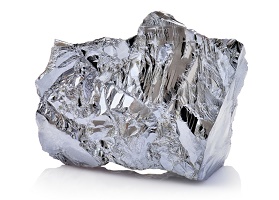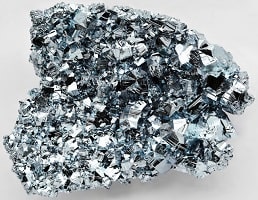Types of Lipids and their Examples – WhatMaster
Lipids or fats are organic molecules soluble in solvents other than water. They are composed mainly of carbon and hydrogen, and, to a lesser extent, of oxygen, nitrogen, and phosphorus.
Lipids are characterized by how they dissolve in different liquids or solvents. Most are insoluble in water, while they dissolve easily in organic solvents such as ether, benzene, or acetone.
Unlike proteins, nucleic acids, and carbohydrates, lipids do not have a common basic structure. Therefore, within this group of biomolecules are many compounds of various forms.
Types of lipids
Lipids are a group of very varied compounds. They can range from the simplest, such as butyric acid, which is found in butter, to the more complex ones, such as sphingomyelin, which is found in the envelope of the nerves.
1. Fatty acids
Fatty acids are the simplest lipids. They are characterized by having two parts: a head and a tail. The head has an acid group (carboxyl group COOH) and is hydrophilic, that is, it likes the company of water. Instead, the tail is a chain of carbons attached to each other that detest water, that is, it is hydrophobic.
When a molecule has an affinity for water on the one hand, and water repulsion on the other, it is amphipathic or amphiphilic . This is the common characteristic of soaps. Lauric acid in a 12-carbon fatty acid widely used in detergents and soaps.
Among the carbons of fatty acids there may be simple CC bonds, or C = C double bonds. When there are only simple unions, we are in the presence of saturated fatty acids .
In contrast, when a fatty acid has double bonds, we are talking about monounsaturated fatty acids (a single double bond) or polyunsaturated fatty acids (two or more double bonds).
The names of the fatty acids relate the number of carbons in their chain and the amount of double bonds they have. For example, the fatty acid with 18 carbons is called octadecanoic, (its common name is stearic acid). In contrast, the fatty acid with 18 carbons, which has a double bond between carbon 9 and 10, is called 9-octadecenoic acid, or, commonly, oleic acid.
Omegas 3, 6 and 9
An old way of calling unsaturated fatty acids is the omega denomination , which refers to the last carbon in the chain . Thus, an omega 3 means that it has a double bond at a distance of three carbons from the end; an omega 6, that the double bond is six carbons from the end, and so on.
Triglycerides or triacylglycerols result from the combination of three fatty acids with a glycerol, hence the name.
Fats and oils are composed of triglycerides. The biggest difference is its state at room temperature: the fats are solid, and the oils are liquid.
3. Phospholipids
A phospholipid with its hydrophilic head and its two hydrophobic legs: one saturated straight and the other unsaturated broken.
The phospholipids look like a head with two legs: in the head is an organic group with a phosphate group, and both legs are fatty acids. This structure is key in the formation of cell membranes: the phospholipids are joined together forming a double layer, with the heads pointing towards the ends and the legs tucked inside.
There are several types of phospholipids; The most abundant in the membranes are phosphatidylcholine (also known as lecithin), phosphatidylserine and phosphatidylinositol.
4. Steroids
Steroids are another class of lipids that, unlike fatty acids, consists of four fused rings: three rings of six carbons and a ring of five carbons. Cholesterol is the most abundant steroid.
Also the hormones testosterone, cortisone and progesterone are steroids. Similarly, the acids and bile salts produced by the liver are steroids derived from cholesterol.
Anabolic steroids used by some athletes are similar to testosterone. Its effect is to increase the production of muscle artificially. The abuse of these substances can lead to physical and mental harm.
5. Eicosanoids
Eicosanoids comprise a group of compounds that are formed from the arachidonic fatty acid , which has 20 carbons. These are prostaglandins, thromboxanes and leukotrienes. These compounds participate in the immunological processes, in the coagulation of blood and pain.
6. Sphingolipids
Sphingolipids are a family of complex compounds. Its discoverer, JLW Thudichum, called them that because of the difficulty in studying its structure.
Sphingolipids are important in membranes. The best known are sphingomyelin, ceramides, gangliosides and cerebrosides.
lipids Function
Lipids and fats have been given a bad reputation, but they are absolutely necessary for the proper functioning of the organism. Its main functions are the following.
The lipids of the diet are used as an energy source. Body fat or adipose tissue is the easiest and most effective way to store energy. A gram of fat produces twice as much energy as a gram of sugar or protein.
Lipids Structure
One of the functions of lipids is the construction of cell membranes. Typically, the cell membrane is formed by two layers of phospholipids, with the hydrophobic faces touching each other, and the hydrophilic faces facing outward.
The plasma membrane also has cholesterol intercalated among the phospholipids, which gives it more fluidity. Some cells also have sphingolipids and glycolipids in their membranes.
Thermal isolation
The feathers of the birds and the leaves of some plants are covered by wax, which is a lipid that helps them repel water. The animals have under the skin a layer of fat that helps protect them from low external temperatures.
Cell signaling
Phospholipids, in particular phosphatidylinositol, are indispensable molecules in the transmission of signals from the outside of the cell to their interior.
Endocrine function
Sex hormones and corticosteroids are hormones that regulate essential functions of the body and are derived from cholesterol.
Pulmonary surfactant
Pulmonary surfactant is a mixture of lipids, mainly phospholipids, that cover the contact surface of lung cells with air. Its function is to lower the surface tension and prevent the lungs from collapsing when breathing. Babies born prematurely lack this surfactant, so they should be placed in special incubators.
Examples of lipids in foods
Lipids are found in the foods we consume in our daily lives. They are in fish, eggs, coconut or oil, as we explain below.
Omega-3 fatty acids
The consumption of omega 3 fatty acids helps prevent cardiovascular diseases. Fish oil is particularly rich in eicosapentaenoic acid (20 carbons with five double bonds) and docosahexaenoic acid (22 carbons with 6 double bonds), both omega 3.
Cholesterol is a very important lipid although it has such a bad reputation. Maintains the fluidity and permeability of biological membranes, in addition to being the precursor of steroid hormones, vitamin D and bile acids and salts.
An adult consumes approximately 0.3 grams of cholesterol per day. The cholesterol in the diet comes mainly from animal sources, such as meat and eggs. Plants, fungi and yeast contain cholesterol-like molecules, called ergosterol and sitosterol, that are not absorbed by the human intestine.
Cholesterol is transported in the blood by lipoproteins. Excess cholesterol builds up in the walls of arteries producing atherosclerosis .
Triglycerides
Triglycerides in the digestive tract are degraded to fatty acids and glycerol, and then absorbed by intestinal cells. There they rearm themselves into triglycerides and pass into the blood in the form of lipoproteins known as chylomicrons .
Lauric acid
Coconut oil is rich in saturated fatty acids, between 45-50% represented by dodecanoic acid (12 carbons) or lauric acid. It is normally used in the manufacture of cosmetics and soaps.
Related Links





